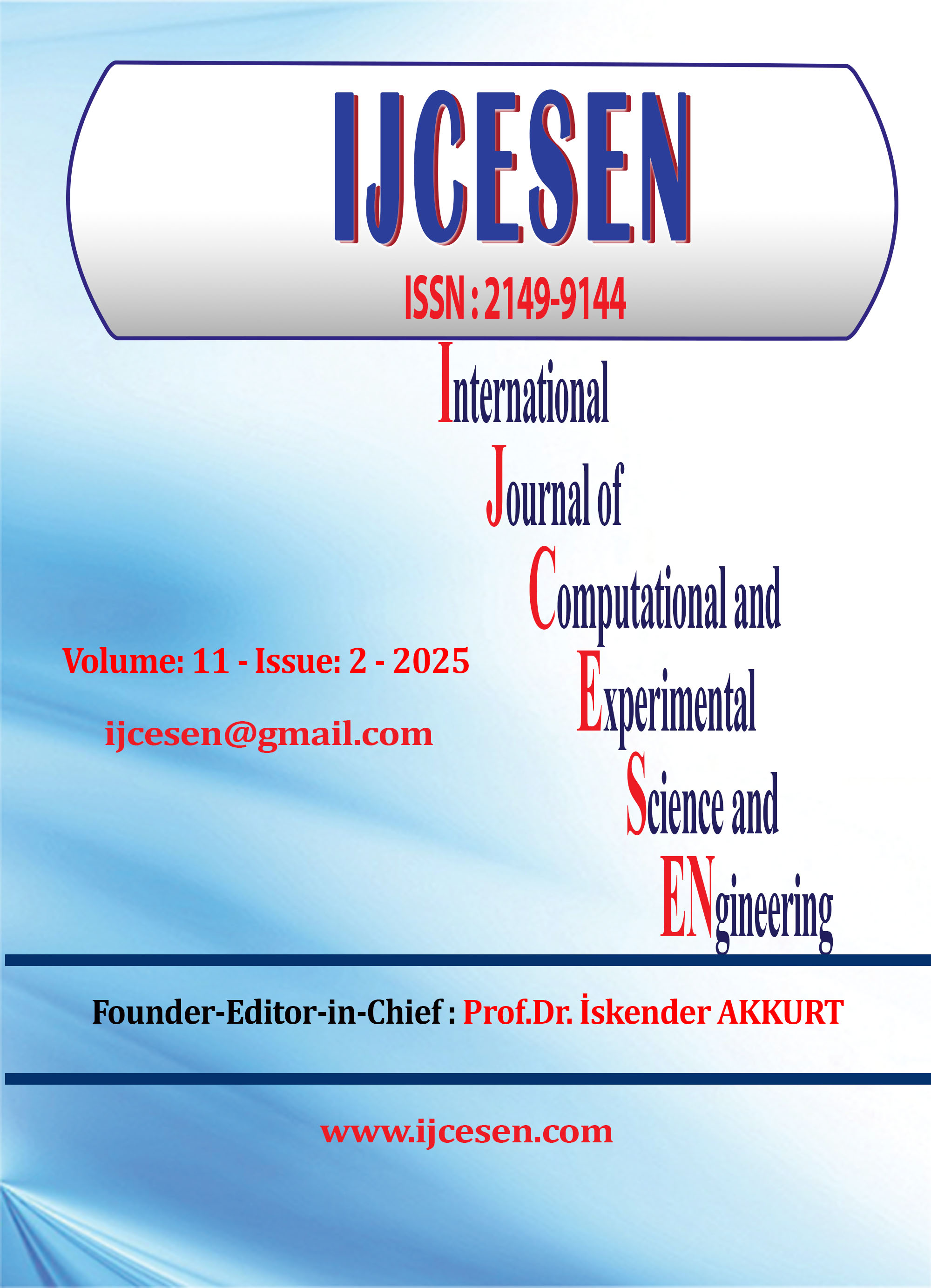Ensemble-Based Machine Learning Approach For Fake News Detection On Telegram With Enhanced Predictive Accuracy
DOI:
https://doi.org/10.22399/ijcesen.1491Keywords:
Fake News Detection, Machine Learning, Telegram Messenger,, Ensemble Feature Fusion,, Accuracy-Engagement, PrecisionAbstract
The rapid proliferation of fake news on social media platforms has raised significant concerns about misinformation, particularly on messaging applications like Telegram. This trend poses a severe threat to public trust and social harmony. Detecting fake news in such environments requires the development of efficient machine learning (ML) models that can accurately identify misleading content while minimizing false positives and negatives. This research aims to propose a robust machine learning-based framework for detecting fake news on Telegram by analyzing text content and user interaction patterns. Data collection involved scraping a dataset from publicly available Telegram channels, which include both genuine and fake news articles with relevant metadata such as user reactions and engagement levels. To address the problem of fake news detection, a set of machine learning algorithms, including XGBoost, K-Nearest Neighbors (KNN), Decision Trees, and Naive Bayes, were explored. A novel ensemble-based approach, termed Ensemble Feature Fusion (EFF), is introduced, combining the strengths of multiple classifiers to enhance predictive accuracy and robustness against diverse fake news characteristics. Performance metrics such as Accuracy, Engagement-Weighted Accuracy (EWA), False Positive Cost (FPC) , Contextual Precision (CP), and Temporal Consistency Index (TCI) were evaluated in this research. Results indicate that the proposed model outperforms conventional ML techniques, demonstrating improved classification accuracy and reduced error rates in detecting fake news. This approach provides a promising solution to the growing problem of misinformation on Telegram.
References
La Morgia, Massimo, Alessandro Mei, Alberto Maria Mongardini, and Jie Wu. (2021). Uncovering the dark side of Telegram: Fakes, clones, scams, and conspiracy movements. arXiv preprint arXiv:2111.13530.
La Morgia, Massimo, Alessandro Mei, Alberto Maria Mongardini, and Jie Wu. (2023). It’s a Trap! Detection and analysis of fake channels on Telegram. 2023 IEEE International Conference on Web Services (ICWS), 97–104. DOI:10.1109/ICWS57953.2023.00020.
Roy, Sayak Saha, Elham Pourabbas Vafa, Kobra Khanmohammadi, and Shirin Nilizadeh. (2024). DarkGram: Exploring and mitigating cybercriminal content shared in Telegram channels. arXiv preprint arXiv:2409.14596.
La Morgia, Massimo, Alessandro Mei, and Alberto Maria Mongardini. (2023). Tgdataset: A collection of over one hundred thousand Telegram channels. arXiv preprint arXiv:2303.05345.
Garkava, Taisiia, Asier Moneva, and E. Rutger Leukfeldt. (2024). Stolen data markets on Telegram: A crime script analysis and situational crime prevention measures. Trends in Organized Crime, 1–25. DOI:10.1007/s12117-024-09490-2.
Boersma, Kitty. (2023). So long and thanks for all the (big) fish: Exploring cybercrime in Dutch Telegram groups. Master's thesis, University of Twente.
Jeleskovic, Vahidin. (2024). A Comprehensive Analysis of Scam Tokens on Ethereum's Uniswap Platform. Tenerife (Canary Islands), Spain, Edited by Sergey Y. Yurish, 119.
Luong, Hai Thanh, and Hieu Minh Ngo. (2024). Understanding the nature of the transnational scam-related fraud: Challenges and solutions from Vietnam’s perspective. Laws, 13(6): 70. DOI:10.3390/laws13060070.
Li, Xigao, Amir Rahmati, and Nick Nikiforakis. (2024). Like, comment, get scammed: Characterizing comment scams on media platforms. Proceedings 2024 Network and Distributed System Security Symposium. DOI:10.14722/ndss.2024.24160.
Shyni Carmel Mary,S., Kishore Kunal, & Madeshwaren, V. (2025). IoT and Blockchain in Supply Chain Management for Advancing Sustainability and Operational Optimization. International Journal of Computational and Experimental Science and Engineering, 11(1). https://doi.org/10.22399/ijcesen.1103
Alvisi, Lorenzo, Serena Tardelli, and Maurizio Tesconi. (2024). Unraveling the Italian and English Telegram conspiracy spheres through message forwarding. arXiv preprint arXiv:2404.18602.
Walther, Samantha, and Andrew McCoy. (2021). US extremism on Telegram. Perspectives on Terrorism, 15(2): 100-124.
Lummen, D. L. M. (2023). Is Telegram the new Darknet? A comparison of traditional and emerging digital criminal marketplaces. Master's thesis, University of Twente.
Peeters, Stijn, and Tom Willaert. (2022). Telegram and digital methods: Mapping networked conspiracy theories through platform affordances. M/C Journal, 25(1).
Hoseini, Mohamad, Philipe de Freitas Melo, Fabrício Benevenuto, Anja Feldmann, and Savvas Zannettou. (2024). Characterizing Information Propagation in Fringe Communities on Telegram. Proceedings of the International AAAI Conference on Web and Social Media, 18, 583-595.
Pradeepa, K., Bharathiraja, N., Meenakshi, D., Hariharan, S., Kathiravan, M., & Kumar, V. (2022, December). Artificial neural networks in healthcare for augmented reality. In 2022 Fourth International Conference on Cognitive Computing and Information Processing (CCIP) (pp. 1-5). IEEE. https://doi.org/10.1109/CCIP57447.2022.10058670
S. Shyni Carmel Mary, Kishore Kunal, & Madeshwaren, V. (2025). IoT and Blockchain in Supply Chain Management for Advancing Sustainability and Operational Optimization. International Journal of Computational and Experimental Science and Engineering, 11(1). https://doi.org/10.22399/ijcesen.1103
Kathiravan, M., Ramya, M., Jayanthi, S., Reddy, V. V., Ponguru, L., & Bharathiraja, N. (2023, July). Predicting the sale price of pre-owned vehicles with the ensemble ML model. In 2023 4th International Conference on Electronics and Sustainable Communication Systems (ICESC) (pp. 1793-1797). IEEE. https://doi.org/10.1109/ICESC57686.2023.10192988
Bhaskaran, S., Hariharan, S., Veeramanickam, M. R., Bharathiraja, N., Pradeepa, K., & Marappan, R. (2022, December). Recommendation system using inference-based graph learning–modeling and analysis. In 2022 2nd International Conference on Innovative Sustainable Computational Technologies (CISCT) (pp. 1-5). IEEE. https://doi.org/10.1109/CISCT55310.2022.10046447
Anand, M., Antonidoss, A., Balamanigandan, R., Rahmath Nisha, S., Gurunathan, K., & Bharathiraja, N. (2022). Resourceful routing algorithm for mobile ad-hoc network to enhance energy utilization. Wireless Personal Communications, 127(Suppl 1), 7-8.https://doi.org/10.1007/s11277-021-08570-5
Menaka, S., Harshika, J., Philip, S., John, R., Bharathiraja, N., & Murugesan, S. (2023, February). Analysing the accuracy of detecting phishing websites using ensemble methods in machine learning. In 2023 Third International Conference on Artificial Intelligence and Smart Energy (ICAIS) (pp. 1251-1256). IEEE. https://doi.org/10.1109/ICAIS56108.2023.10073834
Downloads
Published
How to Cite
Issue
Section
License
Copyright (c) 2025 International Journal of Computational and Experimental Science and Engineering

This work is licensed under a Creative Commons Attribution 4.0 International License.





